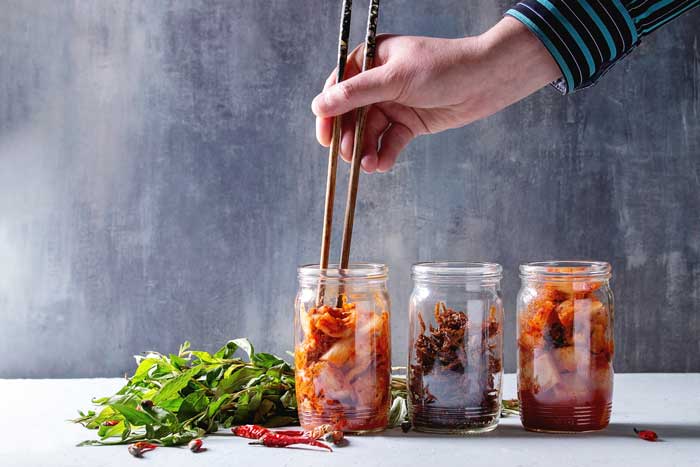
Are you in the mood for kimchi? Even if you haven’t enjoyed it before, your taste buds might have changed. Acquiring a new taste isn’t that hard, you just have to be smart about it. Whether it is the taste, temperature, or texture, something is bound to attract you. Let’s learn more about kimchi!
What Is It?
When you went out to eat at a Korean restaurant in the past, you may have noticed that kimchi was brought to you as a banchan, or side dish. It’s made with veggies, garlic, ginger, chili peppers, salt, and fish. Then the whole mixture is pickled and fermented, reflecting the original way that vegetables were preserved to last through the bitterly cold winters in Korea. Cabbage, radish, cucumbers, and scallions are the most common vegetables used to make kimchi.

Learn More About the Flavor
As with anything else, there are many different flavors to appeal to different tastes. Let’s learn a little more about them. There’s a lot of complexity involved, and it ultimately comes down to the recipe. Flavors include sour, spicy, fishy, sweet, and garlicky.
Sour: Fermentation lends a sour flavor to kimchi. Thus, it’s tangy and pungent and resembles sauerkraut.
Spicy: The spiciness depends on how much red pepper is used. The red pepper powder is also what gives kimchi its distinctive color.
Fishy: Some sort of fish is usually included in the preparation. Common variants include salted baby shrimp, anchovy, or fish sauce. Without the fish, the kimchi tends to taste lighter and fresher.
Sweet: Saltiness and sweetness make for a delightful combination of flavors. How salty or sweet your kimchi is ultimately dependent on the recipe.
Garlicky: Kimchi wouldn’t be the same without garlic in it. It becomes a deep and heady base flavor, which means you can’t go without it!

How to Use It
Finally, let’s look at some ways to incorporate kimchi into your next mealtime masterpiece. Much like rice, kimchi is served at virtually every meal. If it’s not a side, then it is an appetizer. It can also be used as an ingredient in other more complicated dishes such as, jigae stew fried rice, stir-fry, noodles, sandwiches, and pizza!

